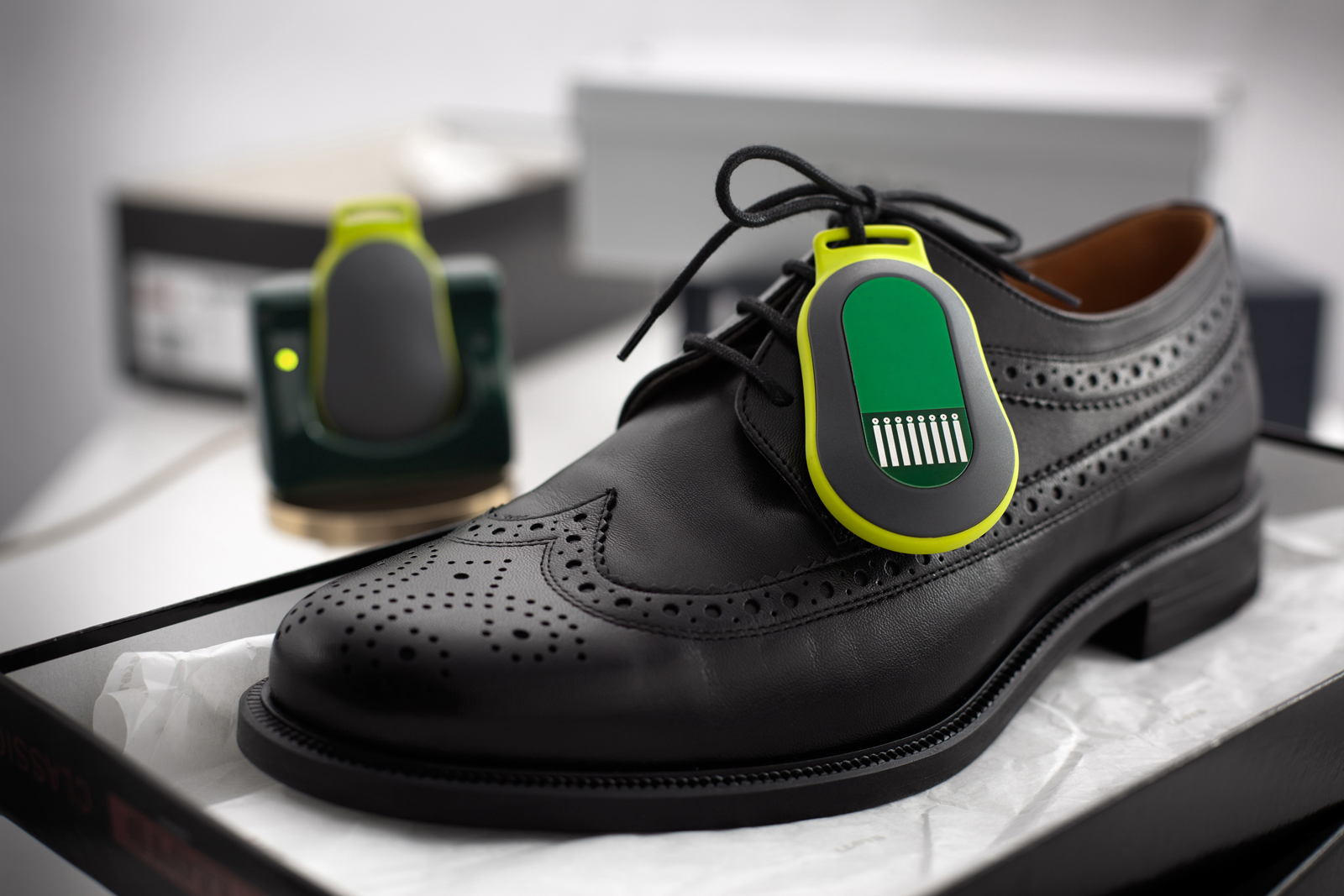Getting a grip on inventory management using RF
More and more manufacturers are offering their products cooperatively through small retailers, as well as in web shops. Researchers have developed a new RF clip with which products can be labeled. It helps avoid duplicate sales.
From a cocktail dress for the next summer party, to favorite perfumes, or computer accessories. There is almost nothing that you cannot buy on the internet today as well. Many customers value the opportunity of going on a shopping tour from the comfort of their sofa, instead of having to fight their way through the city. Therefore it is not surprising that brand name manufacturers are increasingly offering their goods for sale on the web, not to mention the large online mail-order companies. The companies are increasingly working together with regional specialist retailers. Both sides profit from the cooperation. The manufacturer saves the costs and effort of building up additional logistics infrastructure, since the local retailer delivers the goods that were ordered online or has them available for pick up, and deals with returns of products. The retailer in turn receives access to the online market and can thereby broaden its customer base.
The linkage between retail and online business places high demands on inventory management, however. What is crucial is keeping an overview of how many products of what kind are actually locally available from the web shop. Otherwise, duplicate sales may easily occur – for instance, when a customer in the web shop orders a piece of clothing just as another customer in the store is trying on the same piece and would like to purchase it. To avoid situations like this, the retailer would, however, need to grant the web shop access to its inventory system, which only a very small number are prepared to allow. Above and beyond that, these data are only updated once a day as a rule.
Software takes over synchronizing the data
Researchers of the Fraunhofer Institute for Reliability and Microintegration IZM are working together with logistics provider gaxsys GmbH on a simple and effective alternative. “We furnish the products with an active radio module”, explains Stefan Seifert, Developer at Fraunhofer IZM. “This way, you can track how many products are in stock locally and also available any time.”
The RF clip consists of a housing with a RF module, a microcontroller, a battery and a miniaturized vibration sensor. This clip is attached directly to the product at the retailer. Only a unique identification number (ID) is stored on the clip. That can be an item number or an arbitrary number, which the software associates with the item data – for instance, model, color and size for a piece of clothing. If the clip is activated at the retailer, the RF module sends its ID at regular intervals to a central receiver in the store. The software compares the inventory and sends the data on to the web shop. This way, the dealer receives a constantly updated overview of the available inventory.
The neat thing: as soon as the piece of clothing in the store is moved – for instance, because a customer takes it from a rack to try it on – the miniaturized vibration sensor detects this and sends a corresponding report to the RF receiver. “In this case, the customer in the store has priority and the product is locked out on the web shop for a period of time,” explains Seifert. Duplicate sales are thereby excluded. After the item is sold, the battery in the RF clip is charged and the RF clip can then be assigned and attached to a new item. Thanks to optimized energy management, the RF clip already achieves operating durations of up to nine months at present. This is usually sufficient for the period from receipt of goods to the sale of a product, so recharging is not necessary.
The newly developed RF clip of the researchers in Berlin is expected to be employed by gaxsys Gmbh in the context of a total system design that supports retailers in all relevant steps of process, such as creating, operating and maintaining a web shop, payment processing, documentation, right through to logistics. At the moment the focus of the project partners is the clothing sector. Before long, 20 RF modules will be tested for their operational suitability at a clothing retailer. Seifert sees a lot of potential for using this application with other products in the future, predominantly in the higher-priced market segments. Luxury goods such as expensive watches and jewelry would be possible, for example.
